cooktop modules and more in new kitchen plan
We are building a new house and I am working now on the layout of the kitchen and the appliances. I think I would like to have two gas burners, a griddle, and two induction burners.
I've been trying to read as much as possible about the different modules available from wolf, miele, etc. Bertazzoni has the closest (PM361IGX) as a single unit although there is one large gas burner instead of two, and I was told by the nearest appliance store that Wolf and Miele are superior. Wolf seems to have more BTUs on its burner, but maybe 10,000 on Miele's (CS1012) is really sufficient. Wolf has a two gas burner module and a 2 induction burner module but no griddle module so it may mean going with all Miele or a combination of the two. Would it look too odd to mix two different companies like that?
If read at length about the pros and cons of the indoor griddle and I love the idea but am nervous having only used one that goes over my burners in the past. Does anyone have the combi Miele griddle/teppanyaki? Any thoughts?
While we love the look of the full range, I do think that stacked wall oven located near the cooktop makes more sense. I am leaning now towards a steam combi oven and a standard convection oven. I have never used a steam oven but love everything I am reading about them. Miele's sounds great although I understand more companies are coming out with new ones this year.
For fridge and freezer we are planning sub zero 36 in fridge and 27 in freezer. We will have them separated by a counter with cabinets below and either cabinets above or a wall mounted pot rack. This idea of splitting up the fridge and freezer was suggested to us, especially for putting away groceries. Has anyone seen this done before? Does it seem to work? Do other fridge/freezers compete with these?
thanks!
Comments (15)
deeageaux
12 years agolast modified: 9 years agoThe Bertazzoni(PM361IGX) gas burner is powerful,the electric griddle looks next to useless because it is grossly underpowered, and Bertazzoni does not give specifications on the induction hobs,at least none that I can find.
Miele 15" Stainless Steel Tepan Yaki Grill does not give specifications either just that it is electric and not induction.It ask the user to preheat 8-10 minutes. Sounds like a loser to me.
Why do you need/want two gas burners?
The only thing you can do on gas that you can't on induction is properly blister and roast peppers or marshmellows. Do you really need two gas buners?
My advice would be to get powerfull induction hobs. They will be able to simmer,sear,and quickly boil water.
Any gas burner will do for those functions gas is uniquely(or at least better suited) to do.
Usually I am in favor of mixing and matching appliances.
When it comes to cooktop modules I would stick to one company.
The other good option would be to get a single gas cooktop with powerfull burners. The one linked below also has a dedicated simmer burner for delicate task.
I think a range is the only option for an effective griddle,at least looking at what griddle options are available in cooktops or modules that I know of.
Here is a link that might be useful: Bluestar Cooktop
plllog
12 years agolast modified: 9 years agoI have the Wolf 15", two burner gas with a 24" Gaggenau induction from Europe. I love both. I don't require blast power from the gas, but I have plenty with the induction. Using the Wolf can be a little awkward because of the knob placement (have to keep from accidentally setting things across the knobs). I have no real complaints. I use the induction most of the time, but the gas is good to have and I love it for toasting and charring. Originally, I was going to get the Gaggenau Vario 15" with 2 burner gas, teppanyaki and induction high power, flat, single element wok unit, but the price jumped and I really wanted to keep the top drawer and more counter space. Have you looked at the Gaggenaus? The teppan yaki is really excellent (though I decided I could do without it).
Do you have any use for a large burner? If so, I'd get one or the other module as a single or wok burner.
If you decide to combine two different brands that aren't designed to be installed as a single set-up, you'll probably need to have a few inches between each so that they'll be properly supported. I don't think the looks are a big concern. We're talking stainless and black. They all kind of go together.
I don't know much about the new Miele combi-steam. The Thermador doesn't allow you to adjust the amount of steam, if I remember right. I have the Gaggenau and love it, and the single convection oven.
I've seen built-in or integrated fridge and freezer separated often. It doesn't really matter for the groceries if you have a counter across the aisle. The main thing is to have a landing area somewhere. It helps if you have the frozen food separated in the bags. It's better for the food because the packages can keep each other cold on the way home, and it makes putting them away quickly easier. I saw a great installation of the integrated SubZeros with the exterior drawers made with cabinetry surrounds in color stained wood, a bridge crown over the whole thing with puck lights in the middle, mirror back, drawers between the the units, and a counter top that wrapped across the fronts of the coolers so that it looked like there was a separation between the drawer base and upper cabinet. Really cool!
If you're separating them just to separate them, you're cutting off a chunk of counter that might be more useful open. If you're putting them at opposite ends of the wall, with the counter between, i.e., the same amount of counter either way, then it could be useful. Most people don't need to take one thing from the fridge and one from the freezer at the same time, so they can be well spaced.
I couldn't find a good SZ configuration for my purposes and went with Miele 30" all fridge and all freezer. As far as I can tell the quality is similar, but we'll see for sure after another 15 years. I like them a lot.
Related Professionals
Ballenger Creek Kitchen & Bathroom Designers · Arcadia Kitchen & Bathroom Designers · Brownsville Kitchen & Bathroom Designers · El Dorado Hills Kitchen & Bathroom Designers · Gainesville Kitchen & Bathroom Designers · Grafton Kitchen & Bathroom Designers · Henderson Kitchen & Bathroom Designers · Knoxville Kitchen & Bathroom Designers · North Versailles Kitchen & Bathroom Designers · Peru Kitchen & Bathroom Designers · Fullerton Kitchen & Bathroom Remodelers · Independence Kitchen & Bathroom Remodelers · Forest Hills Kitchen & Bathroom Remodelers · Graham Cabinets & Cabinetry · Ridgefield Cabinets & Cabinetrydrbouba
Original Author12 years agolast modified: 9 years agoThank you both so much for your very helpful replies
deeageaux: I hear what you are saying about gas vs induction. We have actually never had induction before so are a bit reluctant to forego gas altogether. Having 2 of each seems like the best of both worlds. And we do blister peppers or eggplants on the flame from time to time. I was told by a chef that you can't sear with induction the way you can with gas, but again I haven't tried for myself.
In terms of griddles, do you know if there is an actual difference (as in material) between the "griddle" marketed by Wolf and the Teppan yaki marketed by gaggenau and Miele, or just the name and style?
plllog: the large burner seems nice although then we would only have 3 total burners, unless we add another module/hob which then I think would be more than we need and eat up too much counter space. What size gagg steam oven do you have? I understand that smaller is better for quick heat up times and that some people are starting to use them in place of microwaves for many functions. Would it make sense to stack a smaller steam combi and a large convection for big birds/roasts?thanks!!
plllog
12 years agolast modified: 9 years agoThere is only one functional size of Gaggenau combi-steam oven. I have the 30", which is the same thing as the 24", only with a door width (and underlying trim) to match the 30" single convection oven (I think you can only get tank (as opposed to plumbed) in the 30", with the tank using part of that trim space). The controls match up in the middle between them. I would have preferred to put them side by side and get the 24" combi-, but it would have looked too stupid... My biggest complaint, by far! So, yes, it makes sense to stack the two, and they were designed to do just that. The larger oven also has a good broiler, rotisserie, and, as an extra, heavy pizza stone with its own heat element. The pizza stone isn't as useful as I'd hoped because it really only gives you room for baking a 12" width, but the performance is awesome.
I don't remember precisely, but I believe the cavity of the Gaggenau combi-steam is 18" deep x 12" wide x 8" tall. Thereabouts anyway.
The Wolf griddle built into the rangetop, which I think is what you're asking about since I haven't seen a modular one, is more like a flattop. A true griddle. Stainless. It has a grease tray in the front, and a single control knob.
I haven't seen the Miele teppan yaki for awhile, but I'm pretty sure it sits above the counter surface, like a little platform. It has a small channel for liquids and a stainless steel surface. There are two controls.
The Gaggenau teppan yaki sits into the counter, rather than above it, and has a deep rim, but no channel for liquids. Chromed surface (supposed to be easier to clean--the distributor recommends using half a lemon to wipe it down while still warm). Two controls.
If you have the teppan yaki, you can also use it for pots, especially for things you're simmering or holding.
It will help you make decisions if you write down everything you do when you're using your stove, and if you don't have full function now, make one out of cardboard and go through all the steps "playing" cooking full meals, etc. Someone or other who studied this found that most people rarely use more than three burners at once. Add a steam oven, which can do many of the things people do on a stove, and an oven which can do warming or a warming drawer, and I think you'd have enough wherewithal to make anything. I've found the warming drawer particularly helpful for feasts. During the recent holidays I had a small party (i.e., they get fancier food) and never had more than two pots going at once, though all three ovens, plus the warming drawer. It was much less chaotic than my pre-warming drawer days! Even so, I would only have needed 2-3 elements going because the spiced pine nuts didn't have to stay warm.
deeageaux
12 years agolast modified: 9 years agoI was told by a chef that you can't sear with induction the way you can with gas, but again I haven't tried for myself.
That chef has only experience with low powered induction or more likely is comparing induction with dedicated commercial wok gas burners that have 135k btus or more.
Since you are not considering putting in commercial wok burners and TOL commercial ventilation becuase that would be completely rediculous and expensive it is best to compare residential apples to residential oranges.
In the Wolf,Miele,and Thermador class of induction you can certainly sear as well as the best gas cooktops. You want an induction hob of at least 3000 watts. 4000w and above is nicer though.
I think pillog has answered the griddle question well but then why do you want induction then?
It seems like a Bluestar cooktop or a Capital Culinarian/Bluestar rangetop with integrated griddle might be a better option for you.
drbouba
Original Author12 years agolast modified: 9 years agoI suppose I want induction because it can boil water faster and because everyone seems to say how amazing it is, but I still like the idea of having two gas burners because it's what I am so used to, for the occasional power outage, and the aforementioned times when an actual flame comes in handy. Do you think that by having 2 and 2, there is an inherent sacrifice in quality or performance over a single 4 burner cooktop or range of either gas or induction? As for the griddle, I know that I really have to find a way to try one out first. Or at least get closer to the miele and gaggenau models than simply the websites. Like induction, I love the theory and the great reviews but don't have personal experience. I have a griddle pan which a love and suspect I would start to use it extensively. I'll have a grill outside so I don't see such a need for a cooktop grill inside.
Again, I can't tell you how much I appreciate all of your insight and advice!plllog
12 years agolast modified: 9 years agoHaving modules costs more but it doesn't have to be a sacrifice in function unless you're comparing to more powerful units.
I missed answering the sear question above, but a hot pan is a hot pan. It doesn't make sense that induction would boil faster but not sear well. In order to get a good sear, you need to have a pan that remains above 300 degrees after you put your cool meat in it--that is, that starts enough above 300 that the cooling from the meat doesn't reduce the pan below sear temperature. The trick is to have your meat dry so that it caramelizes right away (i.e., sears). It also helps to have a larger or denser pan, so that the mass of the pan has a chance against the mass of the meat.
Unless, that is, you mean "char". I'm just learning that that's what some people mean when they say "sear". Searing makes the meat caramelized and brown. It does not actually "seal in the juices", though that is a phrase that you hear regularly. It actually dries out the surface that is being seared, which is what makes the interior seem juicy by comparison. The surface sugars transform and become firm, yummy and appealing. Charring is where the outside blackens, and carbonizes. Some people adore the crusty, crunchy char flavor, even though it is essentially brunt.
I don't char, but have no trouble searing on induction. The assertion that the origin of the heat matters is absurd, though, as Deeageaux mentioned, there are some gas ranges/rangetops available for residential use that have greater thermal output than is available on most induction. That same thermal output is what makes your water boil. The efficiency of induction probably adds to the water boiling time, but it's usually power boost (throwing extra power at a single element for ten minutes) that creates the magic instaboil whizzbang demonstrations.
According to the conversion on The Induction Site, 3000W induction is equivalent to approximately 21,500 BTU. 4000W is equivalent to over 28K BTU. Usually, on residential induction units, you only find 4000W as a rating on a large double ring with boost. You have to have a large enough pan to trigger the outer ring, and even though they call it 4000W, I think that may be additive, and I don't know enough physics to know if the combined number is really equivalent to having a single ring that's 4000W. It still develops plenty of heat, though.
The thing to remember, is that the combination you've specified doesn't have nearly the output of one of the gas ranges that Deeageaux mentioned. That's where you get that amount of output on all burners, and all of them are large enough for the largest pots. The Wolf modules each have medium hob and a small one, with associated power. In this case, the larger induction element has considerably more available power on boost, but quite a bit less on standard, than the larger burner on the Wolf gas.
You can't really measure cooking performance by comparing numbers however. You can sear on an old fashioned residential range. You just might have to employ more tricks. What I can say, is that the Wolf two element modules will give you good, but not blast furnace, power. The Miele 15" wok burner gives you as much BTU as I've seen for residential use. The 12" is plenty. But the 12" double gas has significantly less power than the Wolf. The Wolf multi-function (wok) is about equivalent to the 12" Miele. The two burner Gaggenau 15" gas are equal output, about halfway between the two Wolf. The 12" Gaggenau gas is similar to the 12" Miele with fairly low power output (one at standard residential outbut, one significantly less). The Gaggenau 15" induction has a goodly medium element and a lesser, small one. The Gaggenau 15" single induction has a double ring, which is a medium inside of a large. It can only take one pot at a time. If you don't need the larger ring, it isn't all that much added power, but it does have the wok attachment. The 15" Gaggenaus have the knobs on the front of the cabinet, which means they don't play well with others.
As I said, I have both gas and induction, for similar reasons that you state. I almost never choose to use gas over induction unless I'm toasting. My induction elements are more powerful than my gas ones, so I use them when I sear rather than going for the gas.
Most people with griddles on their ranges here report that they'd be fine with a stovetop griddle. This is a bit problematic with the Wolf gas because of the different sized, offset burners. You'd be better off with two pans. If you have a large induction element you can get a round griddle for it. Theoretically you can span two induction elements with a long griddle if you're careful (you don't want to overheat the unit), but you'll still have the differing heat issue.
If you can get to a Miele Gallery, and a Gaggenau installation (e.g., Purcell Murray in California) and try these out, you'll have a better idea of what you're getting, but having thought it through in detail, above, I'm getting the feeling that Deeageaux had the right of it when he referred you to a top power rangetop, like Bluestar or Capital, with griddle. Or do something like Gizmonike did, which is a gas range with a Gaggenau single induction on one side and teppanyaki on the other.
deeageaux
12 years agolast modified: 9 years agoThe 22k btu burner on the BS or the 23kbtu burner on the Culinarian will boil water as fast as any but 4kw+ induction burners and it can do it all day long not just on induction "power boost or superboost." On BS you get two 22k btu burners and on the Culinarian they are all 23k btu burners.On induction units you typically have one power hob.
The way you are heading it is either the Miele with a 2.4kw induction hob,the Wolf at 3kw ,or the Gaggenau at 3.6kw.
The Gagg induction is ~$2K? Then the Gagg gas module another $2K?. Or the Wolf for a bit less?
You start spending big cash and you don't get 4.6kw induction hob available on the 36" Thermador nor the 23k btu gas burner on the Culinarian.
This leads to the inevitable question "how much power does one need?" The corollary question then becomes " how much money do I need to spend?" followed by "If I am spending Ferrari money should I not get Ferrari performance?"
In short I think you are better off going all in on gas or induction. Or a full size induction unit paired with cheap 12" gas cooktop from a company like Fagor to roast peppers and eggplants over an open flame.
There are Wolf cooking demonstrations all over the country and they usually just use induction for the stovetop portion. Bluestar also has demonstrations in large metro areas. I would go to these if you can and see for yourself.
drbouba
Original Author12 years agolast modified: 9 years agoplllog - when you say that your gagg is from europe, does that mean that it had to be special ordered? Does that make installation more difficult (not that I will be doing that myself mind you)?
Also, pardon my ignorance, but what exactly is the power boost you guys are referring you to? Is that an additional device or mechanism or just using inner and outer rings simultaneously?
thanks again!
plllog
12 years agolast modified: 9 years agoPower boost is where some of the power from elsewhere in the appliance is thrown to one element to achieve that lightning fast boil. :) Usually the boost is limited in duration, often ten minutes, which I surmise is to keep the electronics from overheating. The heat detectors can also prevent boost from happening altogether if you've had a large pot on for awhile. In a larger, more expensive unit, there might be boost pairs, in others boost shuts down the other elements. On my small Gaggenau, for instance, the two smaller rings are paired, so that you can only boost when one is turned off. The center ring of the large element can boost at any time. The whole double element (i.e., all 11", such as with my stockpot) can "superboost" if it's the only element on, and use the power from the two smaller rings, as well as the inner and outer big one. On superboost it throws 4.4kW (up from 3.6kW). (You can't put that superboost to a wok, however, because it slopes away from the surface and can't detect the outer portion of the wok. The 21 cm side ring boosts to 3.3kW, from 2.2, which is a lot more power than the center 18cm ring, which is 1.8kW boost to 2.5)
I have to say, I hate it on gas cooktops when there are different powers but the same size grates. It's not ergonomic. How do you remember? At least with induction, they generally make them the bigger the ring, the more powerful the element, making it easy to remember.
Yes, I meant that I bought my unit from Europe. They don't sell the 24" here, and had to get creative after I nixed the Varios because of the price increase, as well as being jealous of the counter and storage space (perhaps foolishly so, but although I'd like to have the teppan yaki, I'm otherwise extremely happy with my setup). I fell in love with the Gaggenau knob after looking at the manual to understand what someone in the forum was talking about, and seeing that the same 36" unit as they sell here came in the 2/3 size (literally). I got a demo of the 36" and was sold, so it was just a matter of the logistics. I found a dealer to FedEx it to me, got a letter from the insurance to okay a non-UL, etc. The only installation issue was finding the England to US translation of the wiring diagram, which GW was helpful with. My electrician didn't have any trouble doing it.
drbouba
Original Author12 years agolast modified: 9 years agoOK, all of your information has been invaluable! I think I like the idea of a single high power gas module, a 24 inch induction (if I can figure out how to get one!) and then a griddle module ...
OR
Maybe instead of the 24 inch induction module and the griddle, just get either the new thermador or gaggenau full surface induction cooktop (Thermador Freedom cooktop) onto which I can put the Gaggenau griddle accessory and obviate the need for a separate griddle.
This does go against my natural tendency to NOT be the first on the block with the newest whiz-bang gizmo. also I'm not positive I understand how the full surface cooktop offers a substantial difference (expect for cost) over more standard induction cooktops.jlb1003
12 years agolast modified: 9 years agoPlllog,
Very interested in this post. You may recall that I have on hold -- a 24" Viking Wok Range and a 30" induction unit. Requires a 60" Hood. My kitchen is small. Thus, now considering the 12 or 15" wok cook top instead. (Miele? Other?). Advantages -- smaller hood ($$ saved), more cabinets. But give up the gas oven. The viking oven was only $999 so I'm not saving money, but am saving space & hood size. Any advice?? If I go that route, what cooktops do you recommend? I would use it for wok cooking and canning mainly.jlb1003
12 years agolast modified: 9 years agoOops, I meant to say Plllog, Deeageaux, et al.... equal opportunity to give advice!
plllog
12 years agolast modified: 9 years agoI don't have any specific recommendations for the wok unit. The consensus here is to have the biggest blast you can get for wok cooking.
Macybaby, who cans a lot, mentioned on another thread that there was one stainless pressure canner that was big enough to get the proper levels and which would work safely on an induction cooktop. If so, you might even want to look into one of the dish shaped induction wok units.
I do remember you had some limitations in your kitchen. I prefer the one big hood, but a way you could save money, and probably some space, if you can separate the induction from the gas, would be to put a focal point hood over one, and an under cabinet hood over the other in their separate spots. I think that would look better too if you keep the range because that gives it its own identity. Otherwise, I think you should clad the cabinetry under the induction in stainless, so that it matches with the range, and the whole thing will make more sense under the single hood.
The two spaces with two standard hoods and the discount appliances you already have is probable the easiest on the budget, than the agglomeration with changing, potentially full priced appliances and big custom hood.
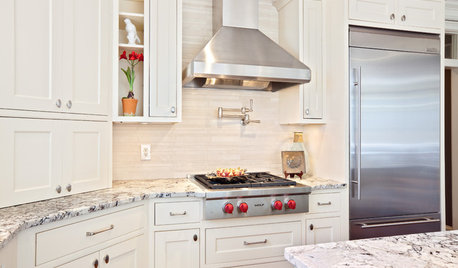

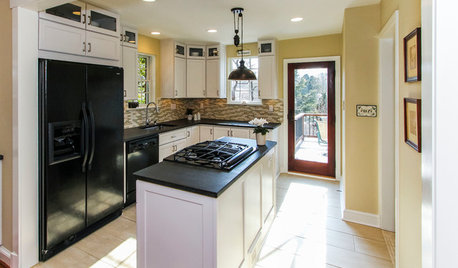
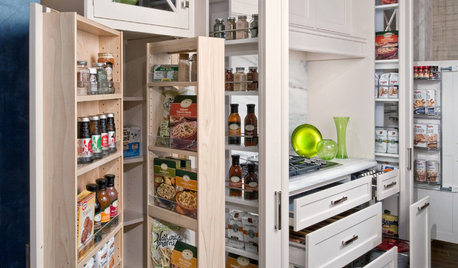
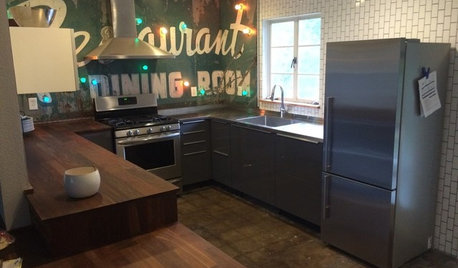
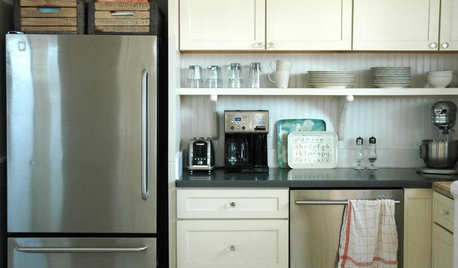
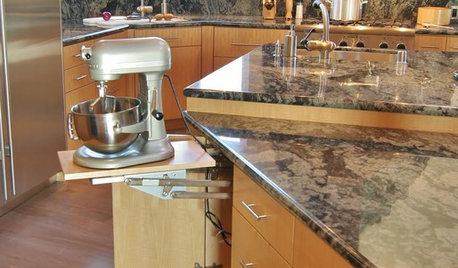
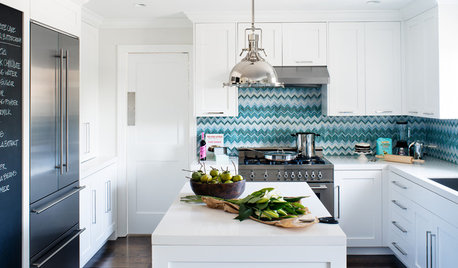
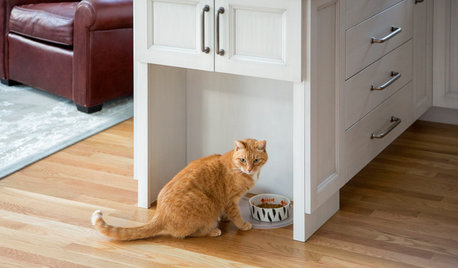
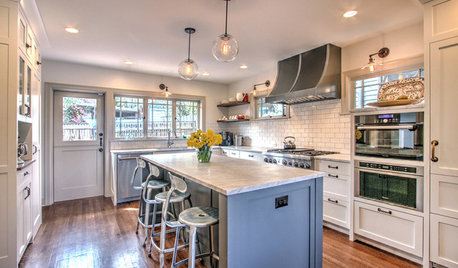








plllog